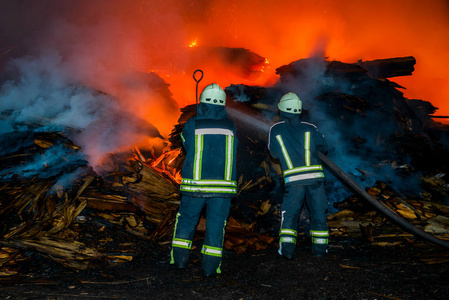The nylon 66 (PA66,Polyamide 66) flame retardant modification of material,which is of great significance for further expanding its applications. This paper briefly introduces, the flame retardant strategies and evaluation methods for PA66. It comprehensively summarizes the research progress in flame retardant modification of PA66, including blending modification, bulk flame retardancy, and surface treatment.
The research trends, major challenges, and future development prospects of PA66 flame retardant are also discussed. Nylon 66 (Polyamide 66, PA66), a thermoplastic engineering plastic synthesized, from hexamethylenediamine and adipic acid, through high-temperature melt polymerization, boasts the highest melting point among commercial polyamides, accounting for approximately 50%, of the total PA production and consumption.
PA66 exhibits excellent mechanical properties, wear resistance, shrink resistance, spinnability, dyeability, and good heat resistance, making it widely used in automotive, electronic, electrical, military, aerospace, and other industrial and civilian fields. PA66 fiber, as the world's first synthetic fiber and one of the three major synthetic fibers, has made the industrial name "nylon" synonymous with polyamide polymers.

However, the inherent flammability , and tendency for the melt to drip, during combustion limit the application of PA66 in broader fields. Therefore, enhancing the flame retardancy of PA66, to meet the requirements of more practical applications, which holds significant practical value and research significance. This paper, based on recent research reports, summarizes the latest advancements in flame retardant modification, and technology of PA66 materials, and discusses the remaining issues.
Chapter 1: Flame Retardant Strategies and Testing Methods
1.1 Flame Retardant Strategies
There are several approaches to improving the flame retardancy of polymer materials, namely, increasing the thermal degradation temperature, enhancing charformation during combustion, and reducing the heat release rate, thereby raising the threshold conditions required, to initiate and sustain combustion. The combustion process can be interrupted and delayed, through physical and/or chemical mechanisms. Therefore, there are three primary means, to enhance polymer flame retardancy - flame retardant blending, flame retardant monomer copolymerization, and surface treatment.
Flame retardant blending, particularly with the addition of aluminum hypophosphite or phosphites, is a straightforward and effective way, to achieve high performance and functionality in existing polymers. Flame retardant copolymerization integrates flame retardant components into the polymer at the molecular level, resulting in inherently flame-retardant materials with better durability. Post-treatment methods such as immersion, adsorption, and surface modification are easier to implement, and suitable for post-processing of ultrafine fibers, fabrics, and other finished products.
Currently, flame retardants used for PA66 include aluminum hypophosphite (ALHP), melamine cyanurate (MCA), melamine polyphosphate (MPP), among others.

Leave A Comment
You must be logged in to post a comment.